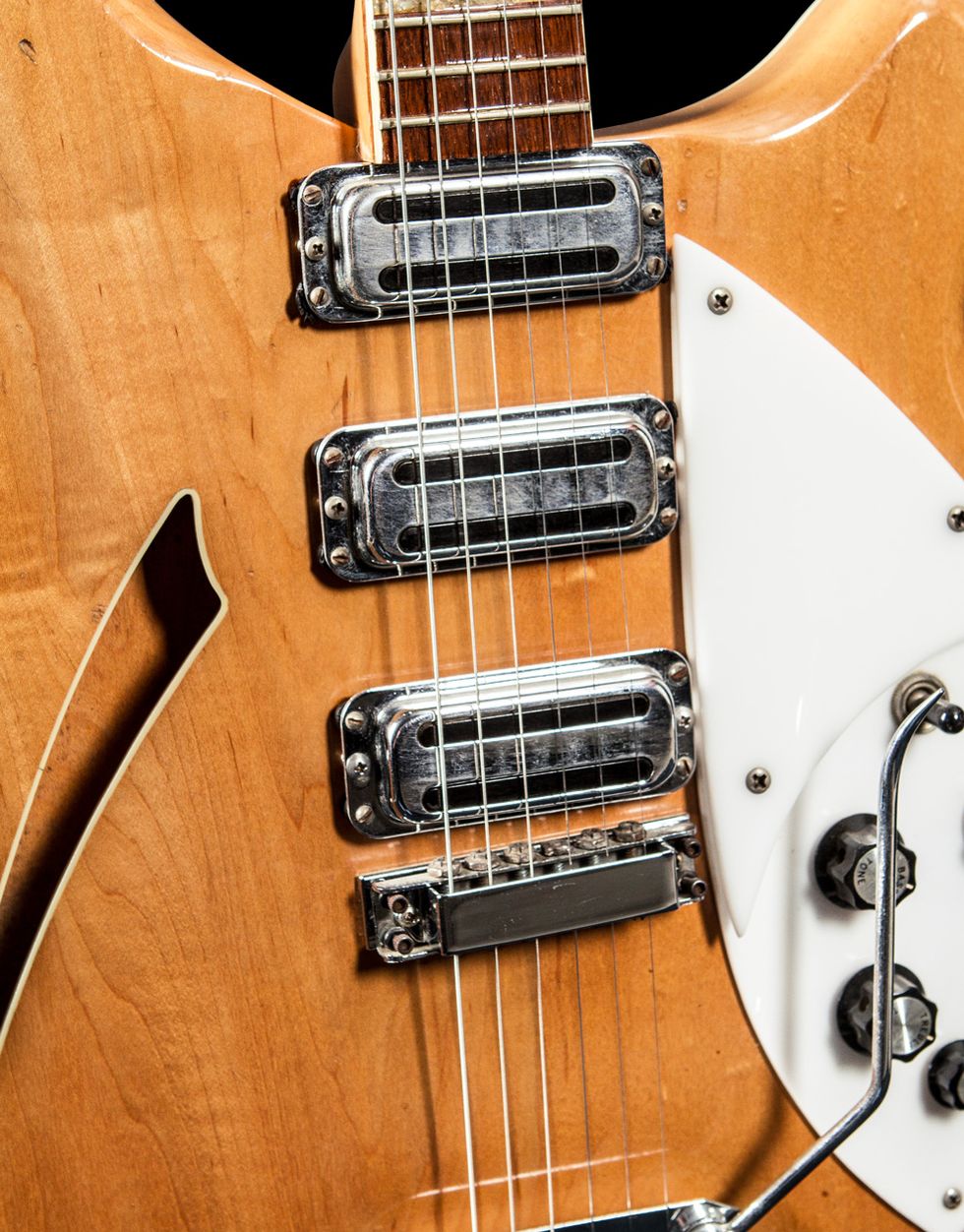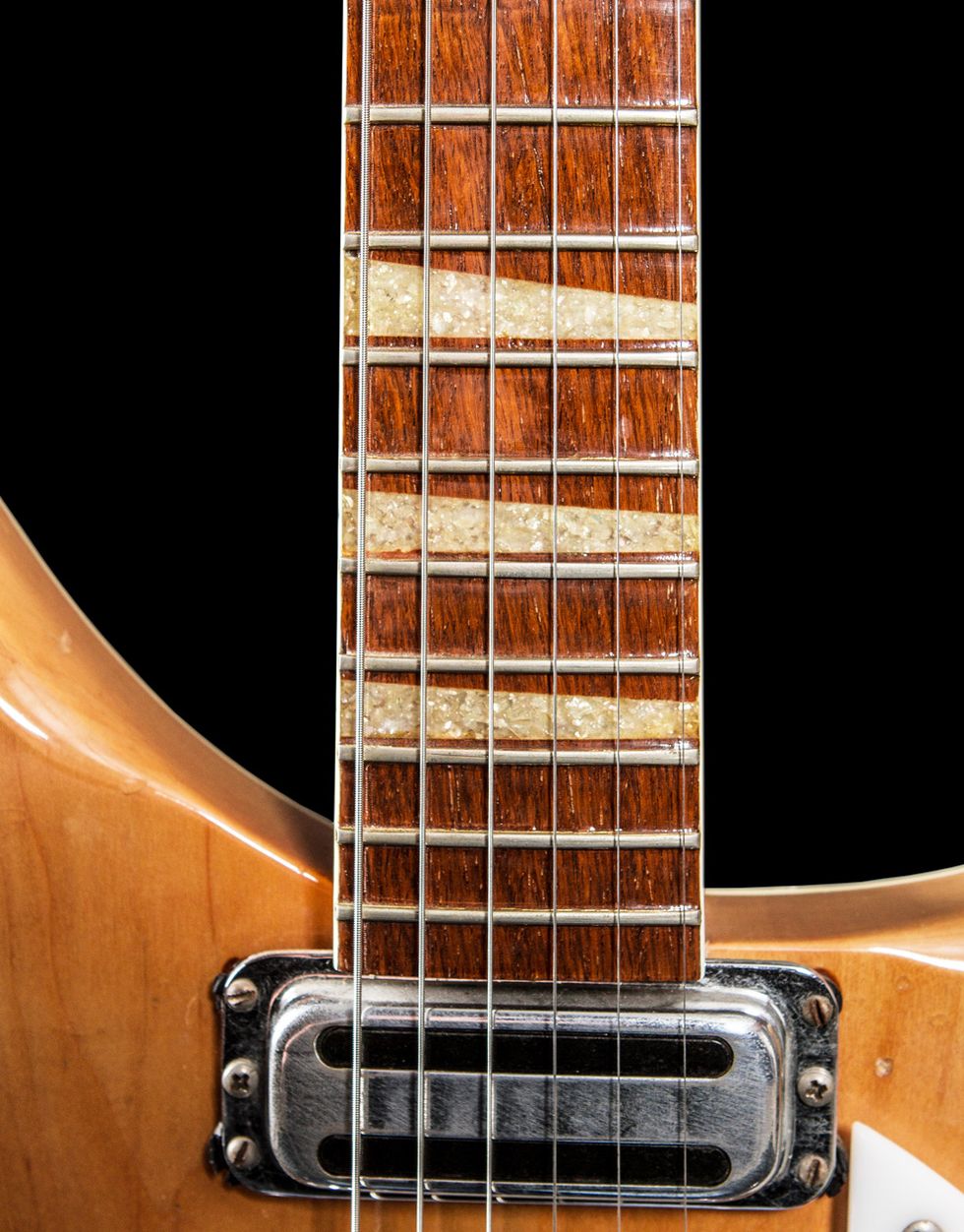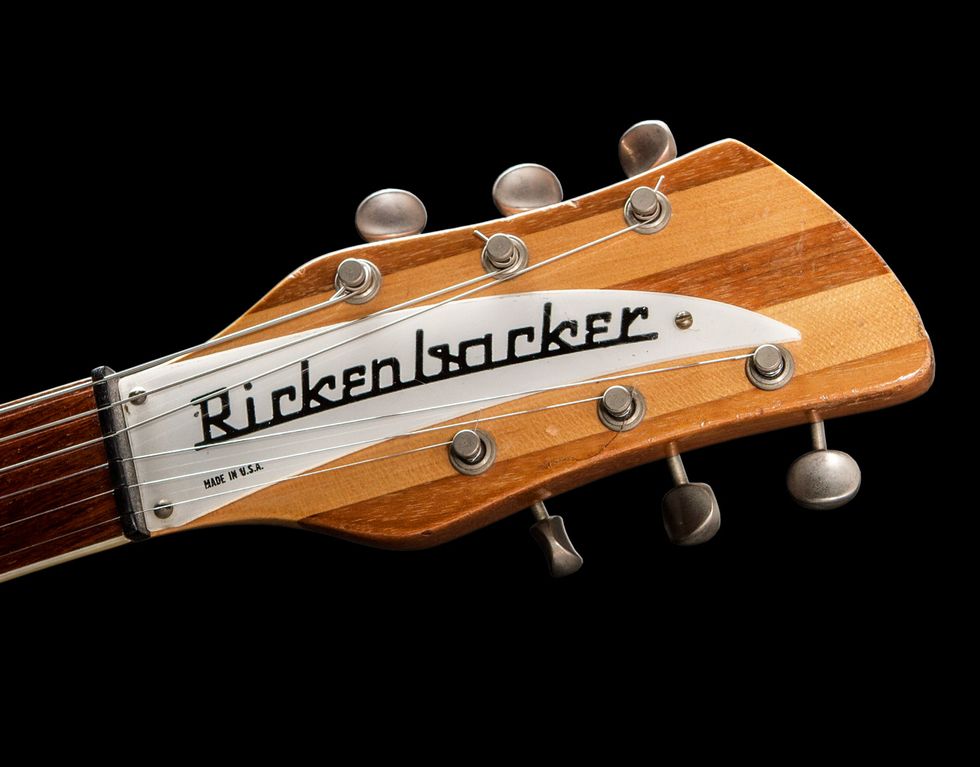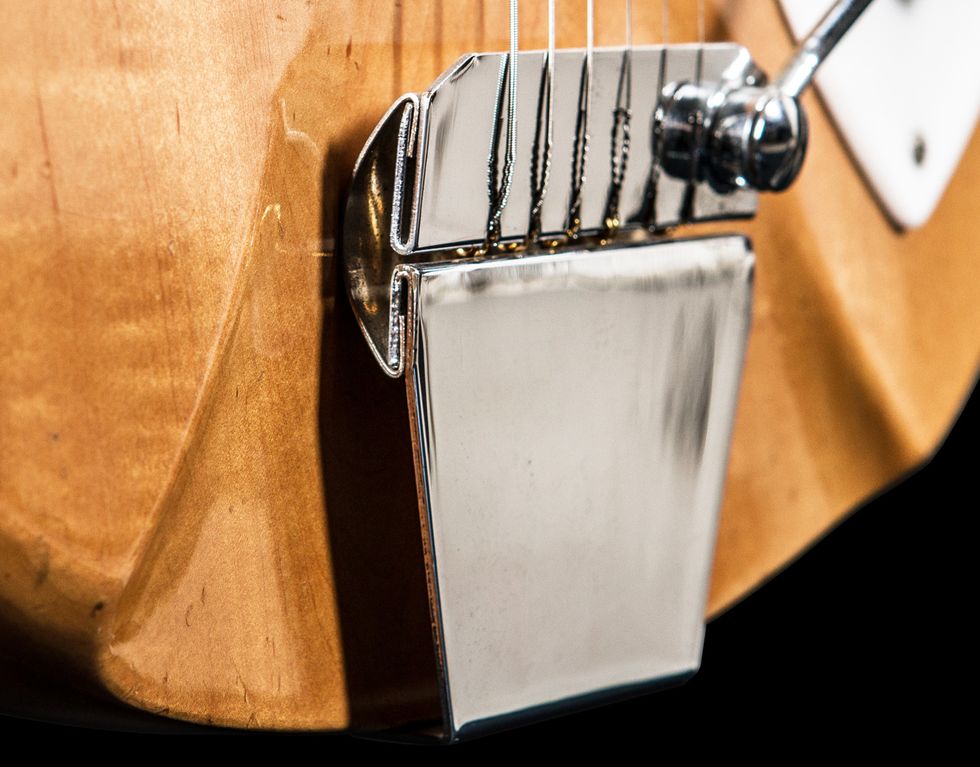Adolph Rickenbacker began a successful Los Angeles, California, tool-and-die business in the 1920s, which eventually provided metal parts for guitar companies like National. Together with two former National employees, George Beauchamp and Paul Barth, Rickenbacker designed and marketed the first electrified “frying pan” lap-steel guitar.
Three toaster-style single-coil pickups provided a wider range of sonic possibilities on the 375 compared to the more budget-conscious Rickenbackers of the day.
F.C. Hall, owner of Radio and Television Equipment Company (Radio-Tel), purchased Rickenbacker’s Electro String Instrument Corporation from Adolph Rickenbacker in 1953. Hall revamped the business and focused on electric standard guitars, rather than steels. In early 1954, German guitar maker Roger Rossmeisl was hired, and his unique European-inspired designs gave Rickenbacker guitars the distinctive appearance that continues today.
This guitar’s bound maple neck boasts a gloss-finished rosewood fretboard with large mother-of-pearl triangular inlays. And the neck pickup sits tight against the fretboard.
This look can be seen on the series of guitars that debuted in 1958 and eventually evolved into some of the company’s most famous models. This line of semi-acoustic guitars was initially known as the Capri series. The method of construction devised by Rossmeisl for these instruments was very unusual compared to the traditional techniques used by other companies. The bodies started as a solid block of wood, which was then hollowed out, to some extent, from the underside, and a separate back was later attached. To complete the unique look, a graceful depression was carved in the lower front for the tailpiece. The series consisted of 12 models: the small-bodied, three-quarter-sized 310; the 315, 320, and 325; the standard full-sized 330, 335, 340, and 345; and the deluxe full-sized 360, 365, 370, and 375. Models ending in zero had no vibrato, while those ending in the number 5 had one. The vibrato-equipped models began using Accent vibratos in 1961, replacing the unreliable Kauffman units used previously.
The Rick’s headstock seems barely touched by wear and time, signaling the guitar’s overall excellent condition.
By 1964, two years after Rossmeisl left the company, the body carve of the 360 to 375 series changed considerably. The guitar’s top edge was rounded, and binding was applied only to the back. Hall described the new look: “The smooth roundness avoids all that is harsh and yields flowing lines for smooth, easy playing.”
On this Deluxe full-sized model, the Accent vibrato base replaced the standard “R” tailpiece generally
associated with Rickenbackers.
The 375 model pictured is dated 1966 and has the features most often associated with classic Deluxe Rickenbacker models of the 1960s. These include a bound maple neck, a gloss-finished rosewood fretboard with large mother-of-pearl triangular inlays, three “toaster” single-coil pickups, a maple body with checkerboard binding on the back, and a bound slash soundhole. The guitar plugs in with the choice of either a Rick-O-Sound stereo output jack or a standard jack. And, of course, this 375 came outfitted with an Accent vibrato rather than a standard “R” tailpiece. The 1966 list price was $494.50. The current value for one in excellent all-original condition is $3,500.
Sources for this article include: Rickenbacker Electric 12-String: The Story of the Guitars, the Music, and the Great Players by Tony Bacon, The Complete History of Rickenbacker Guitars by Richard R. Smith, and The Rickenbacker Book: A Complete History of Rickenbacker Electric Guitars by Tony Bacon and Paul Day.















![Rig Rundown: Russian Circles’ Mike Sullivan [2025]](https://www.premierguitar.com/media-library/youtube.jpg?id=62303631&width=1245&height=700&quality=70&coordinates=0%2C0%2C0%2C0)






